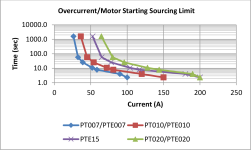Bakerprecision
Plastic
- Joined
- Aug 20, 2022
Hi All,
I just wrapped up purchasing a used GMC GML-1440HD (6hp/3ph), and I purcahsed a 7.5hp Phase Perfect to run it out of my home garage. I've been exchanging emails back and forth with tech support over at GMC Machines, and they are telling me that a "rotary phase converter" does not work (or work well) with this machine, and that you will not be able to achieve full RPM (1800). They went on to say that they had an American Rotary 20hp unit, and could not achieve full performance.
This has me perplexed a little, as I was not aware that motors and/or 3 phase power has a bias?!?! Now the unknown part of this is, will my PP have the same issues as a rotary phase converter? Has anyone experienced an issue like this? Worst case, I'm SOL and have to find a different machine. Best case, this is just some silly story, right?
I just wrapped up purchasing a used GMC GML-1440HD (6hp/3ph), and I purcahsed a 7.5hp Phase Perfect to run it out of my home garage. I've been exchanging emails back and forth with tech support over at GMC Machines, and they are telling me that a "rotary phase converter" does not work (or work well) with this machine, and that you will not be able to achieve full RPM (1800). They went on to say that they had an American Rotary 20hp unit, and could not achieve full performance.
This has me perplexed a little, as I was not aware that motors and/or 3 phase power has a bias?!?! Now the unknown part of this is, will my PP have the same issues as a rotary phase converter? Has anyone experienced an issue like this? Worst case, I'm SOL and have to find a different machine. Best case, this is just some silly story, right?


